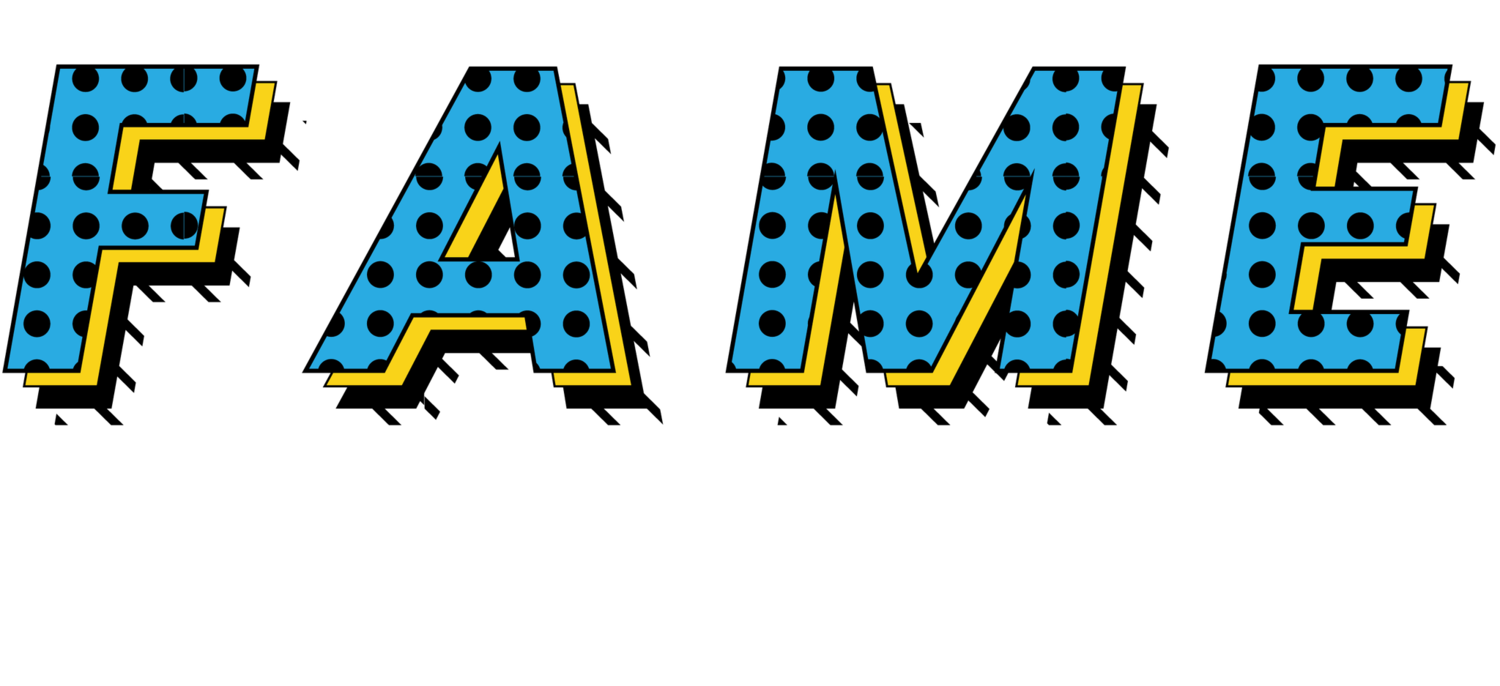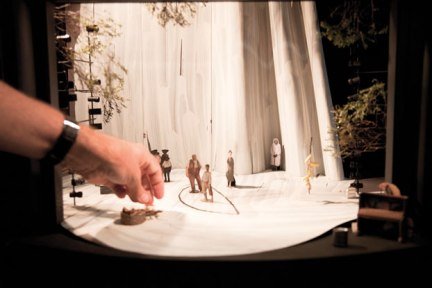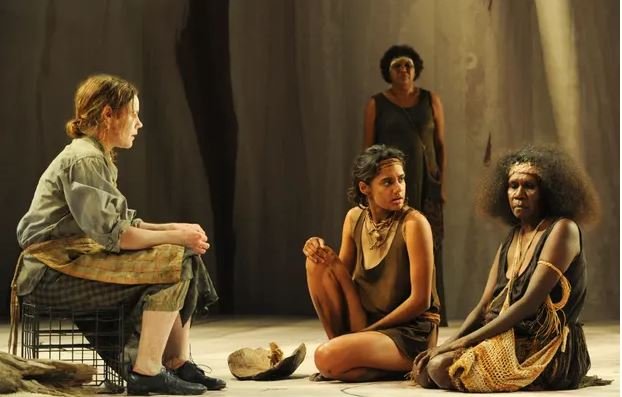BEHIND THE CURTAIN – WITH STEPHEN CURTIS
As the Arts Industry bends in the wake of government funding cuts and covid-normal operations, Production Designers for stage and screen are facing new challenges. Additionally, designers are having to navigate a shifting culture in their contractual relationships with theatre companies.
FAME LSA’s Laura McKenzie sat down with Stephen Curtis of the Australian Production Design Guild (APDG) to talk about shifting relationships between production designers and theatre companies, against the broader backdrop of Australia’s arts Industry.
Can you tell me about the work that production designers do and the usual terms of their employment with theatre companies?
The APDG represents both live performance and screen designers in Australia. I am Chair of the chapter of the Guild that represents live performance designers working in the fields of drama, dance, physical theatre, events and musical theatre. We conceive the world of the production on stage – how it looks, works and what it means. We work closely with the director to dream up everything you see on stage; the sets, costumes and lighting for the production. We then follow through to manage the making of the production with the theatre technicians and costume and set makers, right up to opening night.
Live performance designers in Australia generally work freelance as sole traders and are contracted to the production company. Occasionally a designer might be on staff as an employee of the company. Some film designers also work within their own companies.
Freelance live performance designers have traditionally had a very strong creative relationship with the company, working closely with them and their staff to make the production. It has been creatively symbiotic, where both the company and the designer are mutually dependent. Although we are technically not part of the company, we are working very closely within it. This relationship has worked very well for both the designers and the companies – we have been able to support each other to make the best possible production.
Image: Cursed! Currently showing at Belvoir Theatre with set design by Stephen Curtis. Lynette Curran, Sacha Horler and Chenoa Deemal, image by Daniel Boud
How has this relationship shifted in recent times?
Designers are noticing more and more that companies are trying to define us legalistically as ‘contractors’. While we do work under contract to the company, our working relationship is quite different to what we might think of as a normal contractor. For example, we work with the company’s staff to make the show, within the schedule the company sets, and are realistically working under their management.
When the Guild has asked companies why they are wanting to define designers as contractors their response tends to be around fear of liability. I think many areas of industrial relations are being affected by this shift of liability and risk back on to the worker. By defining us as ‘contractors’ we would be expected to have our own liability and other insurance covers. Some companies are even trying to use the contractor definition to withhold paying the employer superannuation contribution.
Do you think that the increasing strain put on the Arts Industry is contributing to theatre companies taking a stricter approach to enforcing definitions of ‘contractor’?
Yes, I do. Every arts company is under financial pressure, and even more so with reduced audience numbers due to COVID requirements to keep audiences socially distanced. But I don’t think this shifting of liability is really a financial matter. It’s more one of risk-aversion. Ironically the risk is not actually a significant one for the company, since the designer is covered by their insurances anyway when we are working in their premises, and most of the legal liability issues are specifically addressed in the contract. I think the change in culture probably comes more from the increasingly corporatized nature of the workplace and their desire to eliminate any potential legal ambiguity of obligation. But this is the same ‘happy ambiguity’ that is the key to the success of the co-creative relationship between companies and designers.
Image: The Secret River Set design, by Stephen Curtis
As a member of the Australian Production Design Guild, you often come across cases of young designers grappling with these contracts and what to do. What has been the Guild’s advice?
Yes, young designers especially are being thrown by these new clauses in contracts. We advise designers that these ‘contractor’ obligations are new obligations. We encourage them to go back to the company and ask why they are being asked to define themselves as a contractor. I have done this quite successfully – where the general manager listened to the argument of our mutual dependency and we were able to negotiate a fair and mutually beneficial outcome.
We also advise that designers need to make their own decisions about risk-management and decide what professional insurance covers they need. For example, they might decide to take out cover for when they are working in their own studios where they might not be covered by the company’s insurances.
And finally, we advise that if they intend to sign the contract and accept the new liability obligations then they should add this cost to their fee. This is a new cost to the designer, and if the company is going to treat us like a contractor, then we need to add this new cost to our fees as a plumber or consultant would.
What do you think could settle the confusion around the terms on which to engage Product Designers and set the new precedent for these relations going forward?
The Guild has informally sought legal advice and have learned that this area of law is very unclear. It would probably have to go to a test case in the Fair Work Commission to determine our legal status and contractor liabilities. These cases are notoriously very dependent on the fine detail of the employer/employee relationship.
It is also possible that the legal environment is shifting a little under pressure from Gig-economy workers, and we may see some reversal to the hard-nosed pattern of employers shifting responsibility to their workers. I am hopeful!
Image: Georgia Adamson, Madeleine Madden, Frances Djulibing and Ningali Lawford-Wolf in Sydney Theatre Company’s The Secret River.
Photograph by Heidrun Löhr/Sydney Theatre Company from The Guardian. Set design by Stephen Curtis.
The APDG manages to do a lot of advocacy and advising for production designers largely without engaging a lawyer. In what scenarios have you engaged a lawyer’s help? Do you feel there is more room for legal assistance and if so, what factors prevent the guild from accessing that support?
The Guild is not a union and most live performance designers do not feel the MEAA Award really covers them. Most of the APDG’s advocacy work is in the form of advising designers on potential options of negotiation, and occasionally acting as an intermediary for them with the company. Theatre is a bit like a big family, and I have found most companies relatively amenable to negotiating a fair position when faced with a fair argument. When companies don’t do the right thing, word gets out pretty quickly.
We have sought legal advice on the two key resource documents the Guild has put together for designers: the Standard Live Performance Design Agreement, and the Live Performance Guidelines. On both occasions this advice was provided pro bono. We also have an account with the Arts Law Centre.
We are a volunteer organisation and try to keep our costs down so that membership subscriptions can be contained. So, employing a legal team to fight the contractor definition in the Fair Work Commission has not really been an option for us. Should an opportunity for legal help arise in an affordable mechanism , we’d be excited to pursue that.
Finally, despite Melbourne’s lockdown,you’re currently working in Sydney on the set design for a show planned to begin in October! Can you tell me about this show and how it has adapted to the restrictions of the pandemic?
I really feel for our Victorian members. We speak to a group of them every week to check in, and they are remaining stoic. Some have found ways to use the lockdown to plan future projects, but some have been really knocked by the collapse of the theatre industry. We were one of the first industries to lock down and will probably be one of the last to open back up. But there are some signs of theatres opening again. The first was in South Australia – STCSA opened Gaslight a couple of weeks ago, and I’ve started rehearsals for a new First Nations comedy at Belvoir in Sydney. Some of the creative team will be zooming in remotely, which will be a challenge. The audience will need to socially distance and wear masks, so the house will be at a fraction of the normal capacity. It will be very strange, but there is a tremendous will from us all to make it work.





